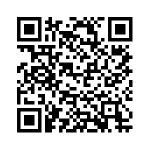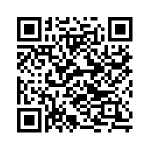Unit 6 Fasteners
Unit 6 Fasteners
Buttons, Snaps, and Zippers–Oh My!
There are a myriad of examples, styles, and purposes of fasteners used in apparel production. The purpose of this unit in your text is to introduce you to some of the more commonly used fasteners in apparel production including buttons, hooks and eyes, snaps, and zippers.
It is important to note that there are many more types of fasteners for you to uncover! The skills you gain through exercises in these chapters are designed to be transferable skills that will better prepare you for inserting, altering, or mending any fastener you may encounter in your sewing experiences.
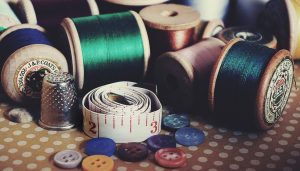
Eve Tokens (2016) outlines many clothing fastener options in her article Clothes Fastenings: 15 Different Types of Fastenings for Clothes. Check this out for more details on a variety of fasteners available for application in apparel production.
How do you know which fastener to use?
If you purchase a pattern, the pattern envelope will include the list of notions for the project, including the fasteners suggested by the producer of the pattern. In general, fasteners are selected based on the garment type, fabric type, position of the opening, amount of stress on the fastener, and the overall aesthetic appearance that is desired (Hackler, 2018).
Fantastic Fasteners
If we affixed a fastener on a garment only to have it fall off after a few short uses, that fastener application would likely receive an “F” on an evaluation score for implementation and effectiveness. Effectively installed fasteners are appropriate for the garment and are neatly constructed.
According to Hackler (2018. p. 1), fantastic fasteners would be:
- neat in appearance with no loose or unsightly threads
- appropriate for the garment design and fabric being used
- applied to an area that has been reinforced with interfacing
- sewn in place with a double strand of all-purpose dual-duty sewing thread or a single strand for heavy-duty thread
- secured so stitches do not show on the right side of the garment/fabric
- appropriately placed so the garment edges are held together smoothly and evenly
- applied with appropriate hand stitch (buttonhole or whip) to secure the fastener to the garment
- secured tightly to the fabric surface

Keep these principles in mind as you repair, alter, or install fasteners. Additionally, remember to follow all hand sewing tips discussed in Unit 5: Hand Sewing.
General Hand Sewing Tips
- Consider the color and type of thread you are using.
When sewing on fasteners, you may choose to use a thread that complements the fabric, mirrors the fabric, or stands out from the fabric. Consider the overall appearance of the garment as you select a thread color for the fasteners used in the project. Use a thread that is going to be strong enough to secure the fastener, checking the fabric type and weight before you select the thread.
- Use sharp needles that are the appropriate size.
A sharp needle is going to penetrate the fabric easier and is less likely to create a hole or tear in the garment you are repairing or creating. Consider the size of the fastener, the weight of the fabric, and the type of thread used as you select the appropriately sized needle.
- 1, 2, 3: That’s enough for me.
Using too much thread when sewing a button or a hook and eye is a great way to cause knots in the thread and a mess in the stitches on the underside of the garment. Use enough thread to complete the project, not too much, not too little. As a rule of thumb, the amount of thread that extends from your arm to your fingers is a sufficient amount of thread to use for a hand-sewing project involving sewing on fasteners. For a fun way to remember this, students often say, “1, 2, 3, that’s enough for me” as they are unwinding their thread and typically find this is the length of their arm and enough for hand-sewing (Deaton, 2021).
- Sew with sufficient light.
Sewing with insufficient light causes strain on the eyes and can lead to poor posture when sewing. Practice proper posture when sewing at the machine and when hand sewing and use sufficient lighting in both scenarios to ensure a safe and proficient sewing experience. This is true for hand-sewing seams and for securing fasteners.
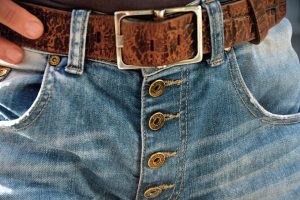
Resources
| Resources | QR Codes |
| Hooks & Eyes, Snaps, and Tape Fasteners |
|
| Types of Fasteners Short Course | 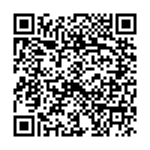 |
References
Deaton, S. (2021). Teaching Apparel Production. Presentation.
Hackler, N. (2018) Hooks & eyes, snaps, and tape fasteners – University of Kentucky. Edited by M.M. Baker. University of Kentucky College of Agriculture, Food, and Environment. Available at: https://fcs-hes.ca.uky.edu/sites/fcs-hes.ca.uky.edu/files/ct-mmb-029_0.pdf (Accessed: November 4, 2022).

